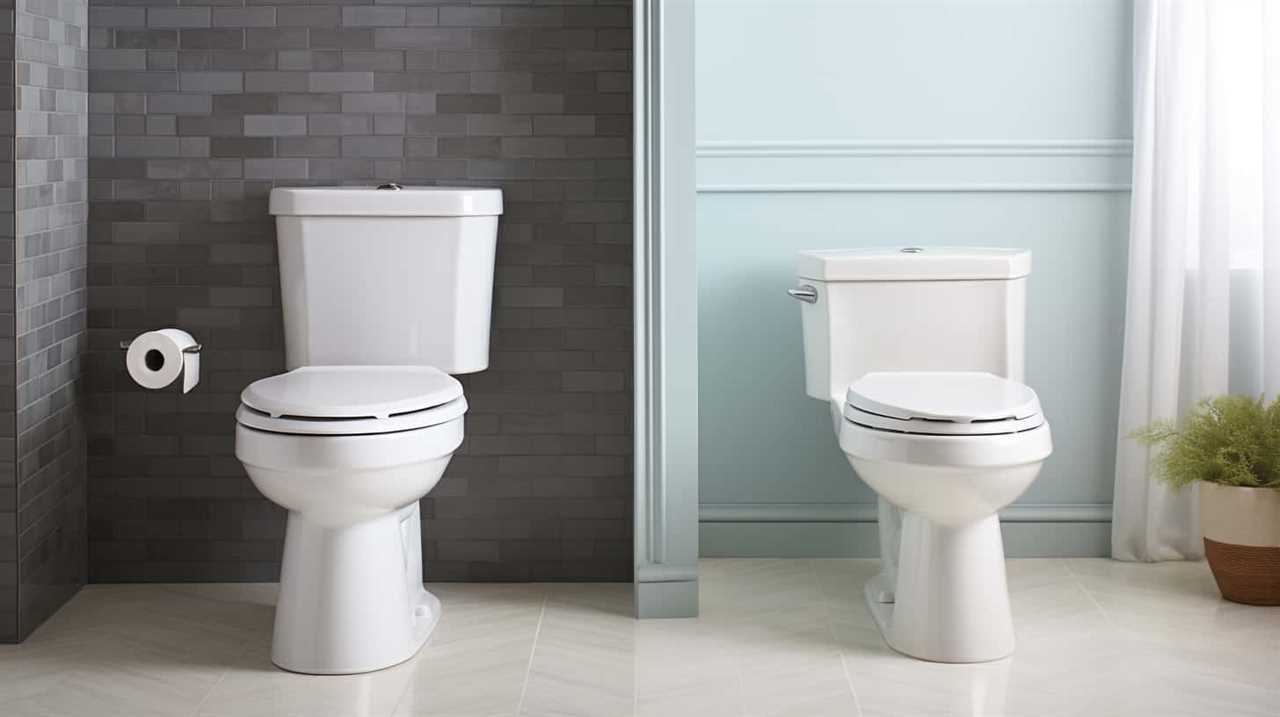As I step into the depths of a pit toilet, the sight and smell may not be appealing, but the function and purpose of this humble structure are vital in many parts of the world.
A pit toilet, also known as a latrine, is a simple yet effective sanitation solution that has been used for centuries.
In this article, I will delve into the history, design, use, advantages, and maintenance of pit toilets, shedding light on their importance in ensuring proper waste management and hygiene.
Key Takeaways
- Pit toilets have been used for centuries as a simple and cost-effective solution for human waste disposal.
- The design and structure of pit toilets vary depending on the location and available resources.
- Pit toilets are a simple and cost-effective solution for sanitation in areas without access to traditional sewer systems.
- Regular emptying of the pit and proper waste disposal is necessary to maintain hygiene.
History of Pit Toilets
Pit toilets have been used for centuries as a simple and cost-effective solution for human waste disposal. The evolution of pit toilets can be traced back to ancient civilizations such as the Indus Valley and Roman Empire. These early pit toilets consisted of a deep hole dug in the ground, lined with stones or bricks, and covered with a wooden or stone slab.
Over time, pit toilets have evolved to include more sophisticated designs, with features like ventilation pipes, seating, and waste treatment systems.
Apart from their practicality, pit toilets also hold cultural significance. In many societies, they are seen as a symbol of sanitation and hygiene. They have played a crucial role in preventing the spread of diseases and promoting public health.
Moreover, pit toilets have become a part of cultural practices and traditions in various communities around the world. They have been integrated into religious ceremonies and rituals, highlighting the importance of waste management and cleanliness.
Overall, pit toilets have not only evolved in terms of design but have also become an integral aspect of cultural heritage and societal values.
Design and Structure of Pit Toilets
The design and structure of pit toilets vary depending on the location and available resources. In terms of pit toilet ventilation, it is crucial to ensure proper airflow to minimize odors and prevent the buildup of harmful gases.
Ventilation pipes are often installed to allow for the circulation of fresh air, while also preventing the entry of insects and rodents. These pipes are typically connected to a vent stack that extends above the roofline, allowing for the release of odors and gases into the atmosphere.
When it comes to pit toilet construction, various materials can be used, including concrete, bricks, or even simple wooden structures. The key is to ensure that the structure is sturdy and durable, with a properly designed pit that can safely contain and decompose waste over time.
Functionality and Use of Pit Toilets
To effectively use a pit toilet, ensure that waste is disposed of properly and hygienically.
Pit toilets are a simple and cost-effective solution for sanitation in areas where there is no access to traditional sewer systems.
The construction of a pit toilet involves excavating a hole in the ground and constructing a basic structure around it. The pit is lined with concrete or bricks to prevent collapse, and a toilet seat or squatting plate is installed on top.
To maintain proper hygiene, it is important to regularly empty the pit and dispose of the waste in a designated area. This can be done by hiring a professional service or following local regulations for waste management.
Additionally, it is crucial to keep the surrounding area clean and free from any potential sources of contamination.
Advantages and Disadvantages of Pit Toilets
One advantage of using pit toilets is that they are a cost-effective solution for areas without access to traditional sewer systems. Pit toilets are simple structures that consist of a hole in the ground covered by a shelter. They do not require expensive plumbing infrastructure or ongoing maintenance costs like traditional flush toilets.
However, there are some drawbacks to consider. One major con of pit toilets is the potential environmental impact. The waste collected in the pit can contaminate groundwater if not properly managed. This can lead to the spread of diseases and pollution of water sources. Additionally, pit toilets require regular emptying and proper waste management to prevent overflowing and odor issues. It is essential to ensure that waste is safely disposed of to protect both human health and the environment.
Maintenance and Proper Waste Management of Pit Toilets
Regular emptying and proper waste management are essential for ensuring the safe and effective operation of pit toilets. Here are four key aspects to consider when it comes to maintaining and managing waste in pit toilets:
-
Regular emptying: Pit toilets should be emptied on a regular basis to prevent overflow and contamination. The frequency of emptying depends on factors such as usage and the size of the pit.
-
Proper waste disposal: Waste from pit toilets should be disposed of in an appropriate manner. This may involve transporting it to a designated treatment facility or using it for composting purposes.
-
Odor control: To minimize odors, pit toilets can be treated with chemicals or natural substances that help break down the waste and reduce unpleasant smells.
-
Environmental impact: Proper waste management in pit toilets is crucial for minimizing the environmental impact. It prevents groundwater contamination, reduces the spread of diseases, and promotes a healthier environment for surrounding communities.
Conclusion
In conclusion, pit toilets have played a significant role in providing sanitation solutions for many communities around the world. Their simple yet effective design allows for proper waste management and helps prevent the spread of diseases.
However, it is important to note that pit toilets require regular maintenance to ensure they function properly. Proper waste management practices, such as regular emptying and treatment of the pit, are crucial to prevent contamination of surrounding areas.
Like a hidden gem in the earth, pit toilets offer a practical and efficient solution for basic human needs.










